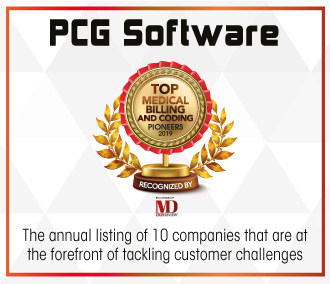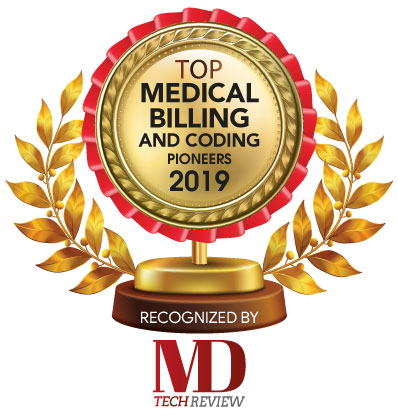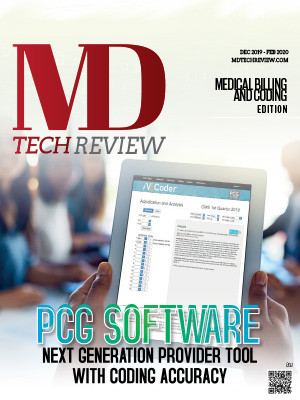The National Health Care Anti-Fraud Association (NHCAA) estimates that the financial losses due to health care fraud are in the tens of billions of dollars each year. The OIG recently excluded over 600 healthcare providers participating in fraud schemes involving over $2 billion.
This presents a two-fold problem for the provider of trying to assure their claims are paid properly and at the same time maintaining compliance with state and federal regulations. While conversing with the CIO Applications’ editorial team, Michael Lubao, CEO of PCG Software, shared his insights on the company’s journey, solutions and total transparency proposition that the company imparts to its clients to combat improper claim processing and assure proper billing and payment.
Can you please give us a brief overview of PCG Software?
We must go way back in history to properly define PCG Software as it exists today. The DNA of PCG’s flagship software Virtual Examiner®, traces back to 1983, when I wrote a commercial billing system. To maximize provider reimbursement, I created a benefit coding algorithm which mirrored an insurance benefits adjudication engine.
The benefit engine sat in stasis while I formed Pacific Consulting Group with a cadre of programmers and consultants. During this period I worked for a major health plan and UCLA. One programming project with UniHealth America required using the benefit engine in which I enhanced with 5 million HCFA (now CMS) based code edits.
Conveniently, in 1995 President Clinton signed the Operation Restore Trust Act. HCFA came out with the first correct coding initiative edits which eventually gave me a legal basis for correct and appropriate coding. As with any new startup, we began with a few HMOs and have gradually expanded over to 106 payors across the United States and have increased our knowledgebase edits from 5million in 1995 to over 45 million code edits today.
Can you walk us through the working mechanism of your offerings?
Over the last 25 years, PCG has developed several applications built on the Virtual Examiner knowledgebase and coding engine. All our products were holistically developed to produce transparency and consistency between Medical Management, provider billers and the claim payment departments.
The first was Virtual AuthTech® (VA). V A w as d esigned f or M edical Management departments to work in symmetry with Virtual Examiner®. Without VA, Medical Management would often authorize procedures which were denied by the claims department due to coding requirements. With VA, pre-authorizations are code compliant with claims thus removing and reducing provider appeals and denials.
To complete the payor-provider claims cycle and promote transparency, PCG developed iVECoder® for providers. This gives providers access to the rules the payor uses to adjudicate and pay claims. The thrust being the provider knows what the payor knows. A by-product is the ability to perform code research without searching through lists of codes. Each time a provider rebills, corrects a claim, or appeals the payor’s determination, it costs the provider between $25.00 and $45.00. A clean claim yields greater and quicker reimbursement from the payor.
There are many factors which separate PCG from everyone else. First and foremost are the multiple comprehensive determinations of our applications. Both billing and claims payment are complex processes. Each claim line for both billers and payers are reviewed by the Virtual Examiner database and multiple reasons for either pending, denying or rebilling with correct coding are revealed within the applications. Our goal is a quick, easy to understand message of the complex coding and payment rules so the provider has a positive revenue stream and the payer adjudicates correctly and cleanly.
In 2018, PCG Software, Inc. installed Virtual Examiner at Nivano Physicians in Sacramento, California. All modules were seamlessly installed, and the initial training completed in seven working days. “Our team at Nivano Physicians has wholeheartedly embraced the Virtual Examiner system. We are finding VE’s ease of integration to our core platform and ability to swiftly apply millions of edit rules in adjudication, identifying issues prior to check-runs truly has helped minimize and practically eliminate problems of overpayment today,” said Sarath Artham, CEO and Chief Technological Officer, Nivano Physicians. Due to increases in efficiency and a proven record with the contracting health plans, Nivano Physicians has more than doubled the number of covered members that their physician network represents with significant contributions to quality patient care and provider satisfaction.
Can you please shed some light on your long-term mission?
Since its inception, PCG Software’s focus has always been on reducing the cost of h ealthcare. F raud, W aste a nd A buse in health care are bad for patients and for business. “PCG’s ultimate goal for healthcare is all about smooth operations and ultimately reducing the cost of health care of the patient, provider and payor” explains Michael Lubao, CEO.
December 14, 2019
Company
PCG Software
Headquarters
Las Vegas, NV
Management
Michael Lubao, CEO
Description
The company is dedicated to creating product solutions that reduce the cost of healthcare for national and regional health insurance plans, independent physician associations and third-party administrators. PCG Software also partners closely with leading value-added resellers, software developers and other market influencers by integrating their software with other best-in-class solutions to confront healthcare’s greatest challenges. The company’s flagship product, Virtual Examiner®, monitors the internal claims process of an organization to trend provider data for wasteful, fraudulent and abusive billing patterns, while maximizing financial recoveries





